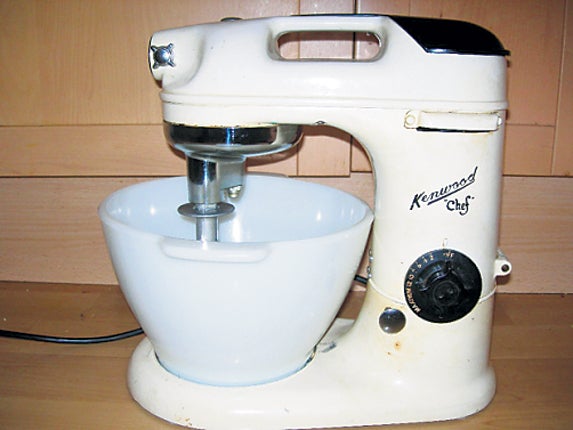The Secret History Of: The Kenwood Chef A700

In 1948, Kenneth Wood gathered together £800 of capital and 20 members of staff and moved into a factory in Woking where he set up a manufacturing company. Two years later he launched the Kenwood Chef (A700 model) at the Ideal Homes Exhibition and began a new era of easy-to-use, labour-saving devices.
It was stocked in Harrods and sold out within a week. Women everywhere wanted one and the A700 shot to the top of wedding-present lists. Such was the demand that within six years Kenwood had a turnover of £1.5m and 400 staff who were making handmixers and liquidisers, too. Its success was in part due to Wood's canny eye for design. His motto "eye appeal is buy appeal," certainly increased his products' desirability.
But it wasn't just about the design. Steven Braggs of retro furniture and interiors website www.retrowow.co.uk says: "It's a classic piece of equipment that generations of cooks have used. As well as being a supremely competent mixer, its strength and enduring appeal come from its bullet-proof ruggedness and incredible versatility. It can literally do anything from making sausages to mixing cocktails."
In fact the rather industrial design of the A700 was replaced in the 1960s when Wood asked Ken Grange to redesign his mixer. Grange opted for a modern, squarer look that gave it instant high-tech appeal.
There was a wobble when production of the new model was delayed due to the late arrival of one of the machines needed to produce it, but once it eventually arrived in the shops, business picked up quickly.
Braggs says: "It was one of those objects that captured the mood of the times. Cooking was trendy – Fanny Craddock emphasised the glamour of cooking at home – and the Kenwood Chef was a luxury piece of equipment."
It came with a large range of attachments – the K beater, a whisk and a dough hook. You could also buy other parts so that you could do everything from peeling and mincing, to slicing, shelling and juicing.
All this meant that it didn't come cheap. Braggs says it was 30 guineas in 1966 (around £400 today). By the age of 38, Wood was a millionaire. He died in 1997, but the company that still bears his name now operates in more than 40 countries and produces more than 200 different models.
Join our commenting forum
Join thought-provoking conversations, follow other Independent readers and see their replies
Comments